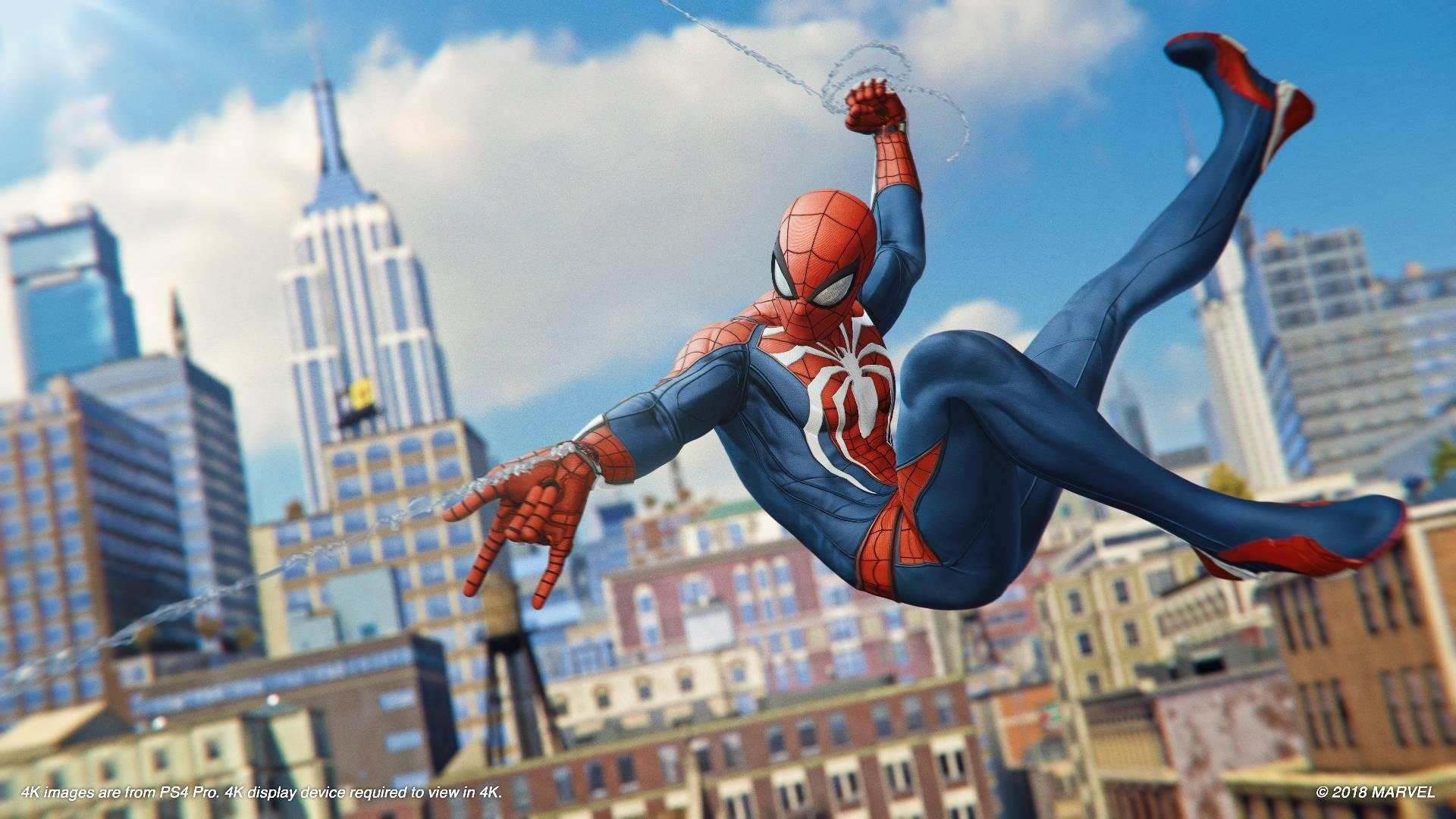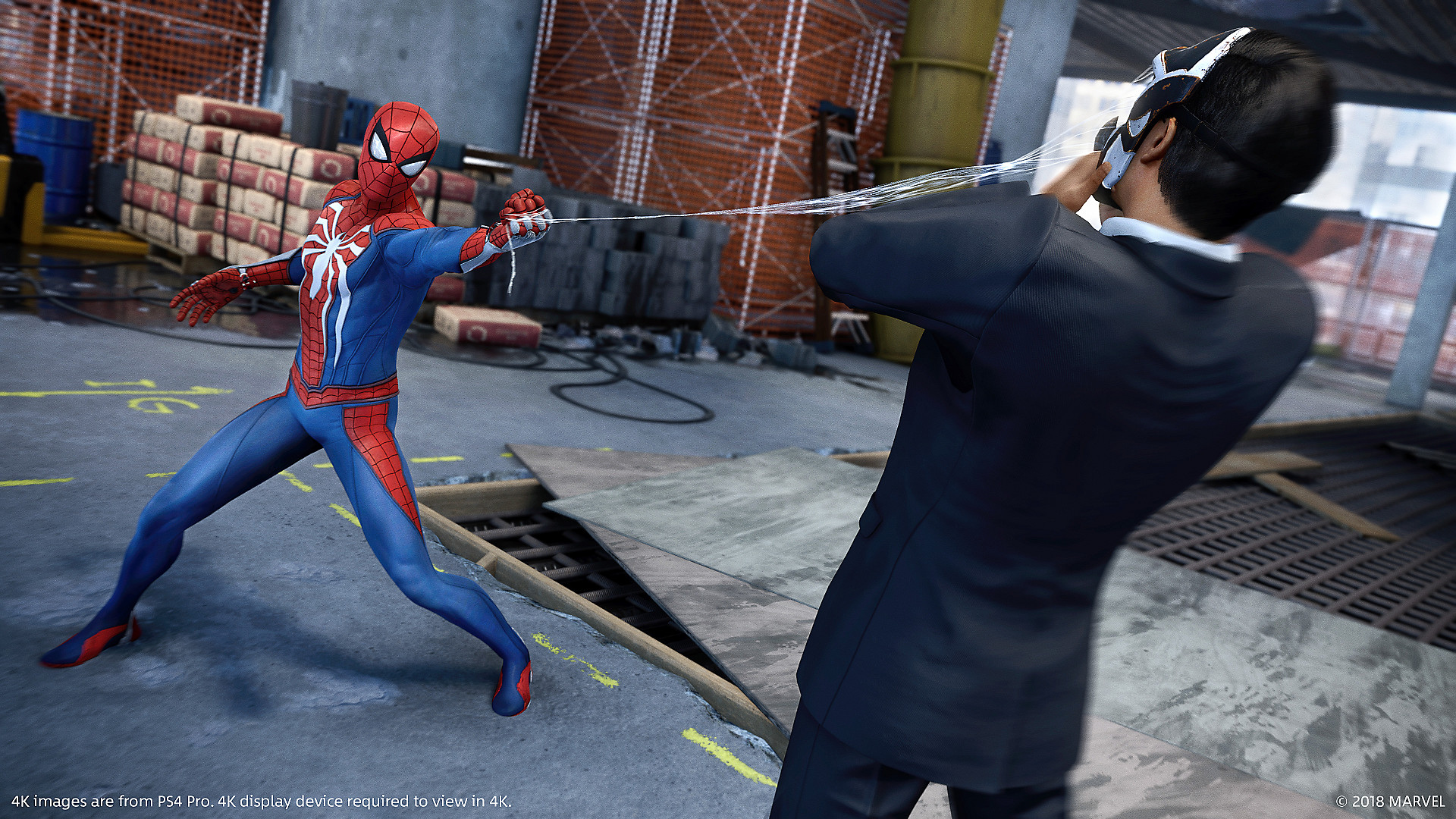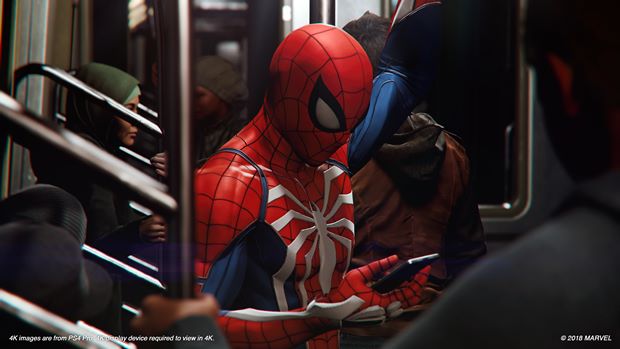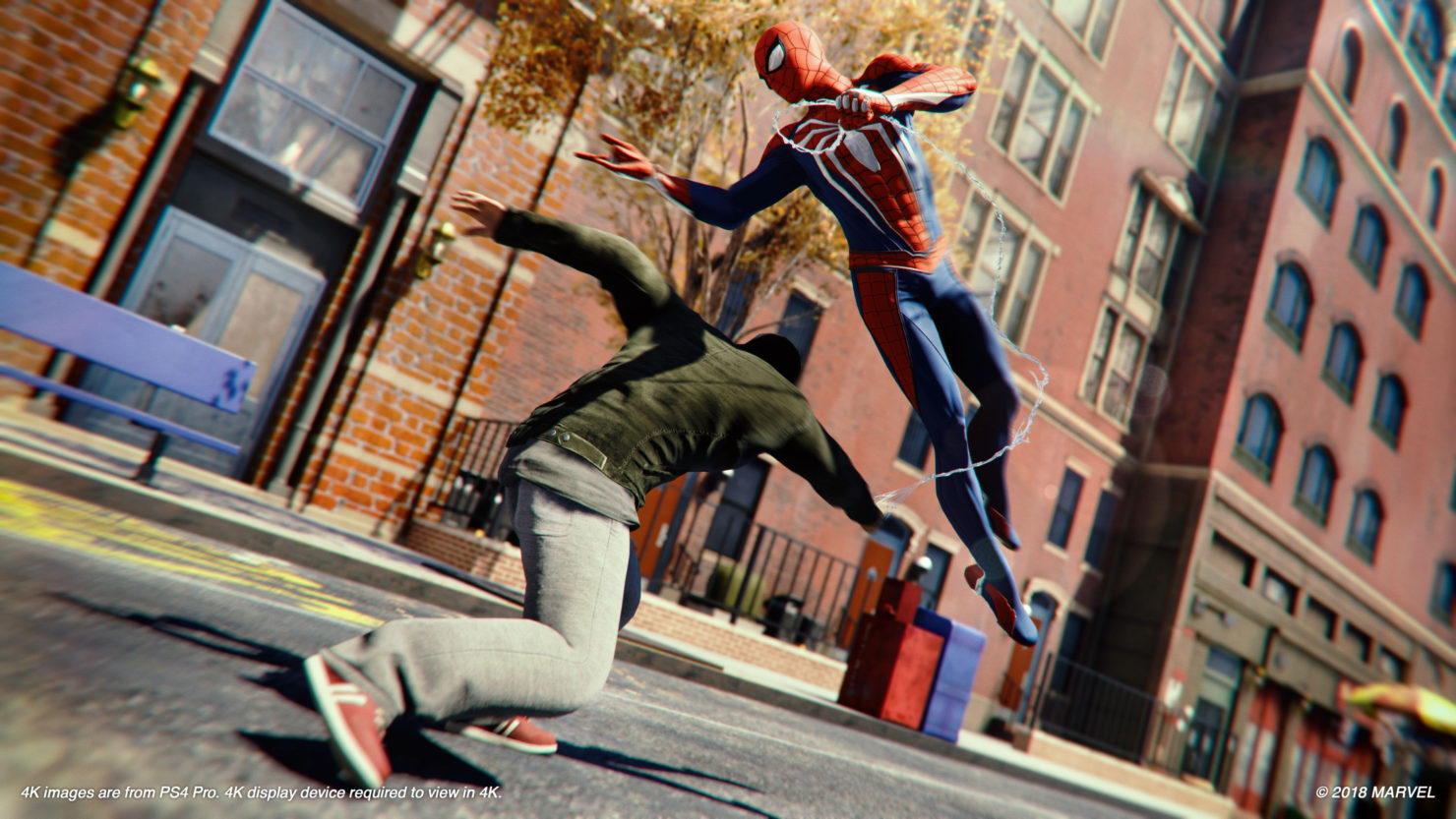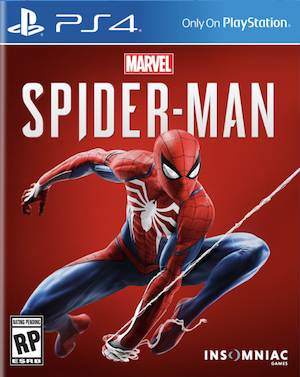
NOTE: This editorial contains major spoilers for Marvel’s Spider-Man.
During their stellar E3 2016 show, Sony unveiled a project that very few could have seen coming- a Spider-Man game, with an original story, made exclusively for the PS4, made by Ratchet and Clank developers Insomniac Games. For a decade and a half, the Spider-Man license had rested with Activision, and though there had certainly been some very good games based on the property in that period – and even a couple of great ones – it was clear that Activision wasn’t leveraging the immense strengths of the license to the best of its abilities- not even close.
Seeing Sony treating Spider-Man as a big-budget tentpole exclusive release injected belief into audiences that this could be a special game, while the combination of the wallcrawler and Insomniac also held the potential to wow audiences. Sure enough, when Marvel’s Spider-Man released for the PS4 in 2018, it did not disappoint. Not only did it receive unanimous praise from critics and audiences while being deemed one of the best games in a year that was, frankly, absolutely brimming with generation-defining titles, Spider-Man was also an immense commercial success for Sony,, also becoming the highest-selling Insomniac-developed game of all time. Just recently we found out that the game has sold more than 13.2 million units worldwide, and it’s probably not going to stop selling well any time soon.
It’s clear, then, that the game struck a lot of right notes with a great many people- not often do we see releases that achieve such levels of critical and commercial success at the same time. But what was it that made this game so great? While its impressive sales can be attributed – in part at least – to the inherent mass market appeal of the Spider-Man property, what do we attribute its critical success to? Over the last couple of weeks, I’ve done similar retrospective pieces on The Last of Us and The Witcher 3, and here, I’ll be doing the same for Spider-Man– attempting to identify and talk abut three key elements that, in my estimation, made it the brilliant game that it turned out to be.
The first of those three elements is something I like to call Spidey-sense- no, not the Spidey-sense. When I say Spidey-sense here, I’m referring to Insomniac’s thorough sense (get it?) and understanding of Spider-Man as a character and as a property, of what makes for a good Spider-Man story, and of what would make for a good Spider-Man game. And that’s something that bleeds through in every aspect of the game. Most of all, it’s immediately apparent in the story.
From the characterizations of all the characters – major and minor – and how Insomniac portrayed each and every one of them, to knowing which characters to use and which to save for a later story, to striking that perfect balance between humour and gravity that any good Spider-Man story needs to strike, Insomniac clearly had a very solid idea about how to stay true to the character while still having the freedom to put their own stamp on it.
And they did put their own stamp on it, and we could see it in many different ways. Mary Jane’s characterization as a go-getting journalist; the way Miles was introduced and the role he played in the story; the way the game portrayed Otto Octavius; the whole mystery surrounding Harry Osborn and how they worked the Symbiote into all of it; J Jonah Jameson’s hilarious podcast; hell, even the way they used a character as minor as Screwball. Every single one of those things felt like it was authentic, like it was respecting the source material, and yet Insomniac had their fun with all of it. At the same time, they were able to craft a story that appealed to both, casual and veteran fans of Spider-Man. Most importantly, they managed to craft a story that you would love regardless of how familiar you were with the character and the universe surrounding him.
That said, it wasn’t just with the characters, story, and storytelling style that Insomniac were able to pinpoint the exact elements they needed to make a Spider-Man a success. They also know what they needed to do from a gameplay perspective- to make it a good game. And what, above all else, do we all want to do in a good Spider-Man game? That’s right- we want to swing around like New York’s wallcrawler and, dare I say it, feel like Spider-Man. And that’s the second element that they nailed absolutely perfectly- the webswinging.
This one really is very obvious. From the moment the game was announced, to all the months Insomniac and Sony spent marketing it and talking about it, to the day the reviews dropped, to all the weeks and months after that when impressions from players came in, the webswinging was the one thing that we were all always talking about. The first thing we all hoped for from Insomniac’s Spidey was for it to have awesome webswinging (followed shortly by all the webs connecting to buildings)- and they absolutely nailed it.
I can go on and on about how good it felt to swing around, and how it worked so well because it was all physics-based, and how it was ingenious in how accessible it was and yet how it still managed to have so much mechanical depth. But I’m not gonna do that- countless people, myself included, have said more than enough about that as it is- what I do want to praise here though is this- Insomniac knew the webswinging was their game’s biggest strength, and like a smart developer, they made sure to leverage that strength wherever and whenever they could. That might seem like a no-brainer thing for any game to do, but sadly, that’s not always the case. Remember Anthem? Flying around in Javelins is easily the best part of that game, but the game itself doesn’t seem to know that. Well, that definitely wasn’t the case with Spider-Man.
Barring a few story-bound moments when you were completely grounded, either as Peter or MJ or Miles, the rest of the game was always more than happy to let you swing around like Spider-Man. Nowhere is that more apparent than it is in the way quests were designed. The quest design itself is nothing to write home about- in fact, it’s really quite generic most of the times, and at worst, it can – at least on paper – seem like the worst fetch quests we remember from JRPGs from 20 years ago. Many side quests were collectathons, some had you literally chasing pigeons, and objectives in many other missions were little more than trailing missions, but much faster.
But Spider-Man was more than happy to go with those tropes, because it could make those tropes work very well around its best and central mechanic. Chasing those pigeons was fun because you got to test your webswinging skills. Those trailing missions were fun because high-speed chases through Manhattan as you’re swinging around can never not be fun. Those collectathons were more than tolerable because each of them was designed in a manner that required the player to make proper use of webswinging. Remember those backpacks that were scattered throughout Manhattan? Climbing to the top of a skyscraper just so you can collect one of dozens of collectables would be groan-inducingly boring in any other game, but in Spider-Man, it was fun because of the webswinging.
But though webswinging was the main, big pillar that held the game aloft, let’s not forget that there was also a smaller – but still incredibly important – pillar that played a huge role in elevating this already excellent game. And that’s the combat- the third element. And once again, just like with the webswinging, Insomniac knew exactly how good the game’s combat was, and they made sure to pepper it in whenever and wherever they could to make sure that the game wasn’t ignoring its strengths.
Prior to Spider-Man’s launch, based on previews and pre-release footage, a lot of us had written off its combat as yet another Arkham clone- and really, at first glance, that is what it looks like. Attack your enemies with a single button and make sure to counter (or dodge, in this case) every time a symbol appears over their heads? Sure, that sounds like Arkham. But once you get to actually playing the game, you realize that it’s radically different.
Because just like the the story and the characters, the combat here screams “Spider-Man”. It’s authentic to the character. Spidey feels quick and nimble, and zipping around between bad guys, jumping over their heads, webbing jump up, dodging between their feet- it all feels incredibly fast and fluid. Using objects in the environment to your advantage adds another layer to all of it, while the Focus bar and the way that ties into your health makes it all its own completely unique thing.
There are also the gadgets, of course- a unique hallmark of Insomniac Games, and, funnily enough, also of Spider-Man. Mixing and matching general combat with Spider-Man’s unique abilities and with smart usage of his gadgets made the game’s combat system incredibly varied. Sure, you could turn it into a simple “punch-dodge-repeat” affair if you wanted to, but Spider-Man was a game that encouraged players to be creative, to pull off unique combos in combat- the kind that only Spider-Man could. And let’s not forget the suits- there were dozens of unique suits in the game, and each of them gave Spidey different abilities that he could use in stealth or in combat. Put together, all these things – Spidey’s unique movement, the fast and quick nature of the fights, the gadgets, the environmental cues – all of it came together to make the game’s combat surprisingly complex and layered. And that was exactly why most of us didn’t take issue with having to fight wave after wave of enemies in optional bases- because we were all too happy to take any excuse to dabble in the combat a little bit more.
Spider-Man was by no means a perfect game. It wasn’t a game that shook the industry, or a game that will be mentioned in the same breath as the likes of The Last of Us and The Witcher 3, which we’ve spoken of recently in similar fashion. But it holds a special place in my heart – and the hearts of many others – because it played to its strengths, and it was really, really fun.
Insomniac Games were recently acquired by Sony, as we’ve all heard by now, and I cannot wait to see where the two of them take this series next. This doesn’t happen often, but this is one sequel that many will be anticipating fervently because of both, the story and the gameplay, in almost equal terms.








